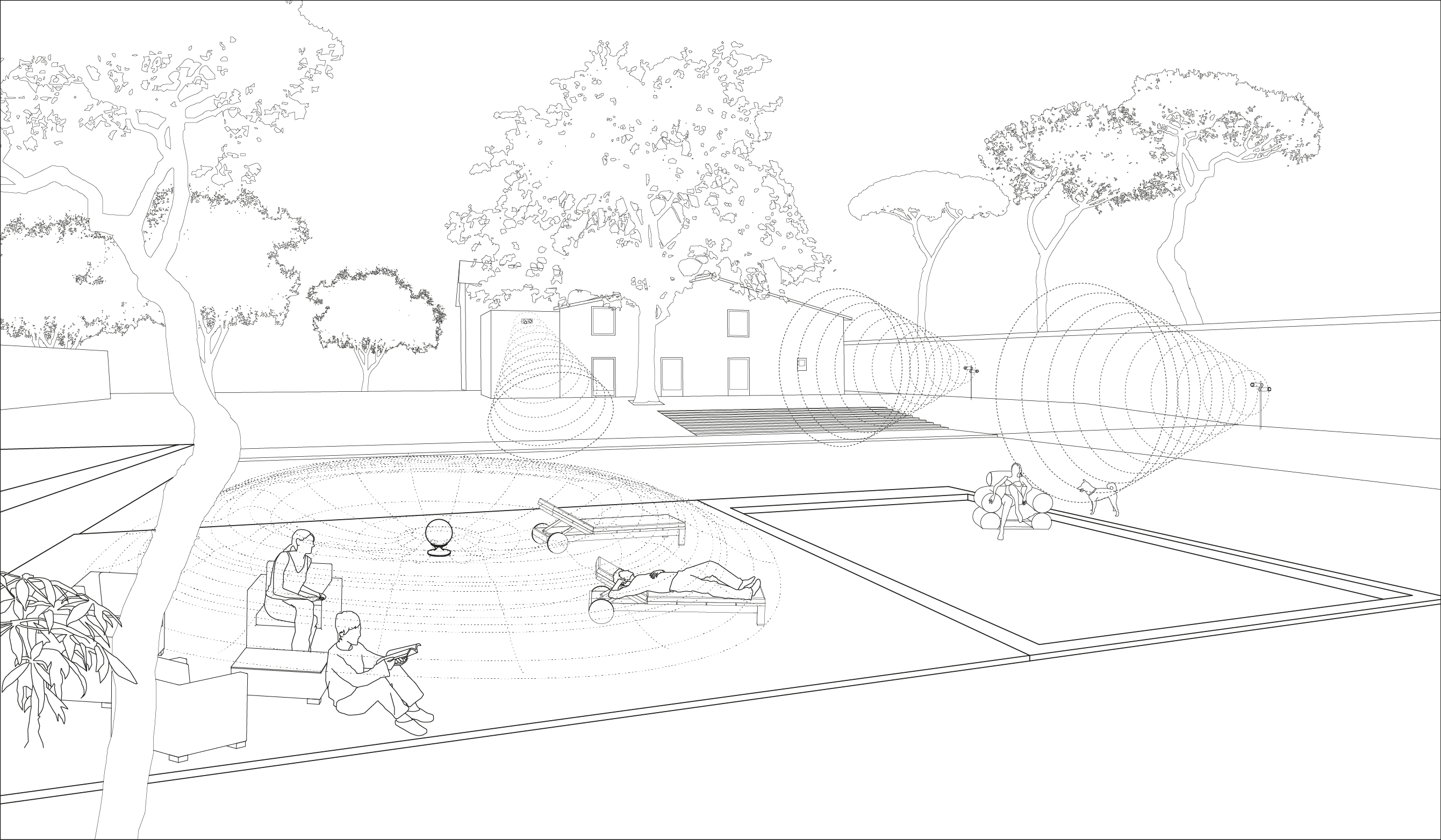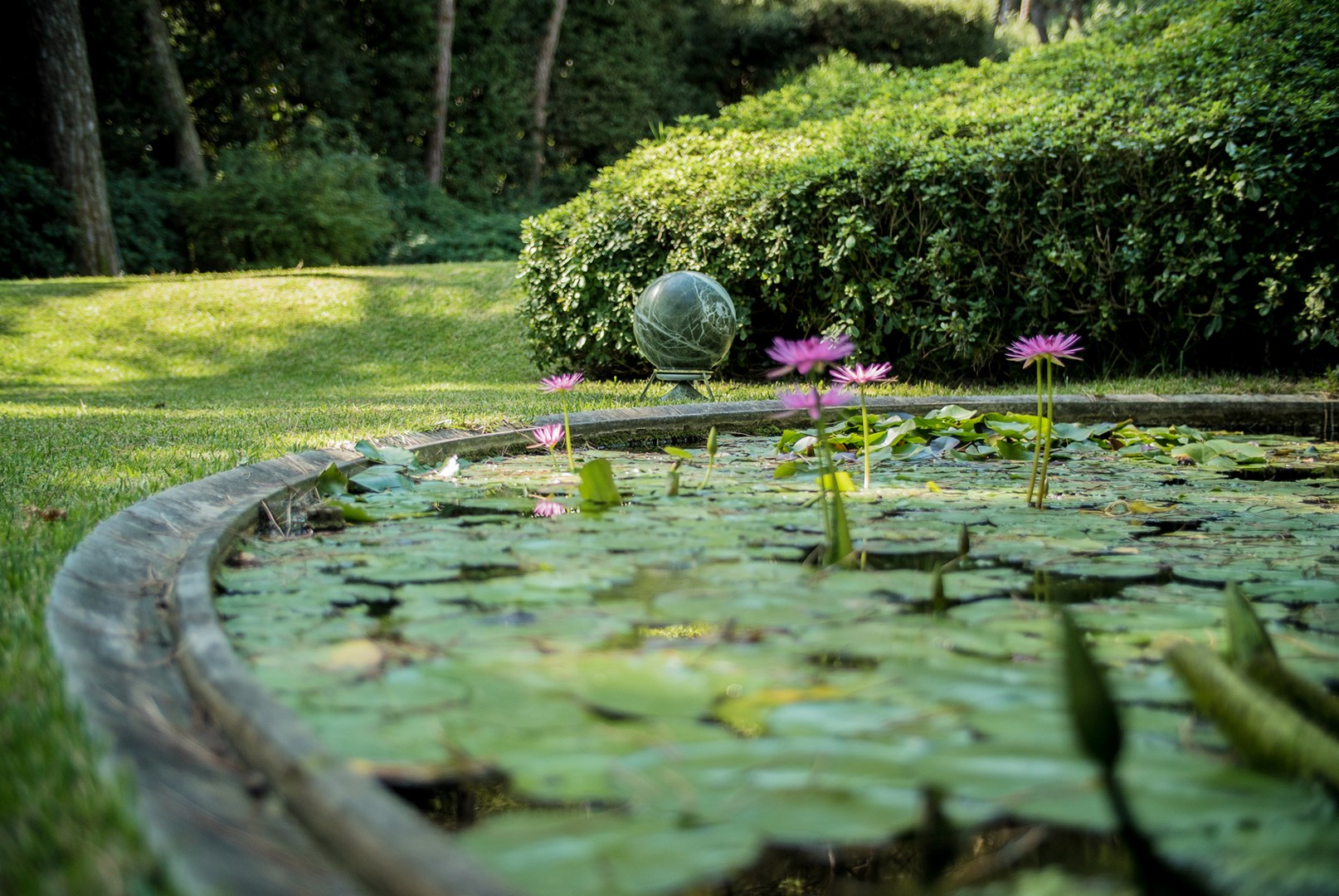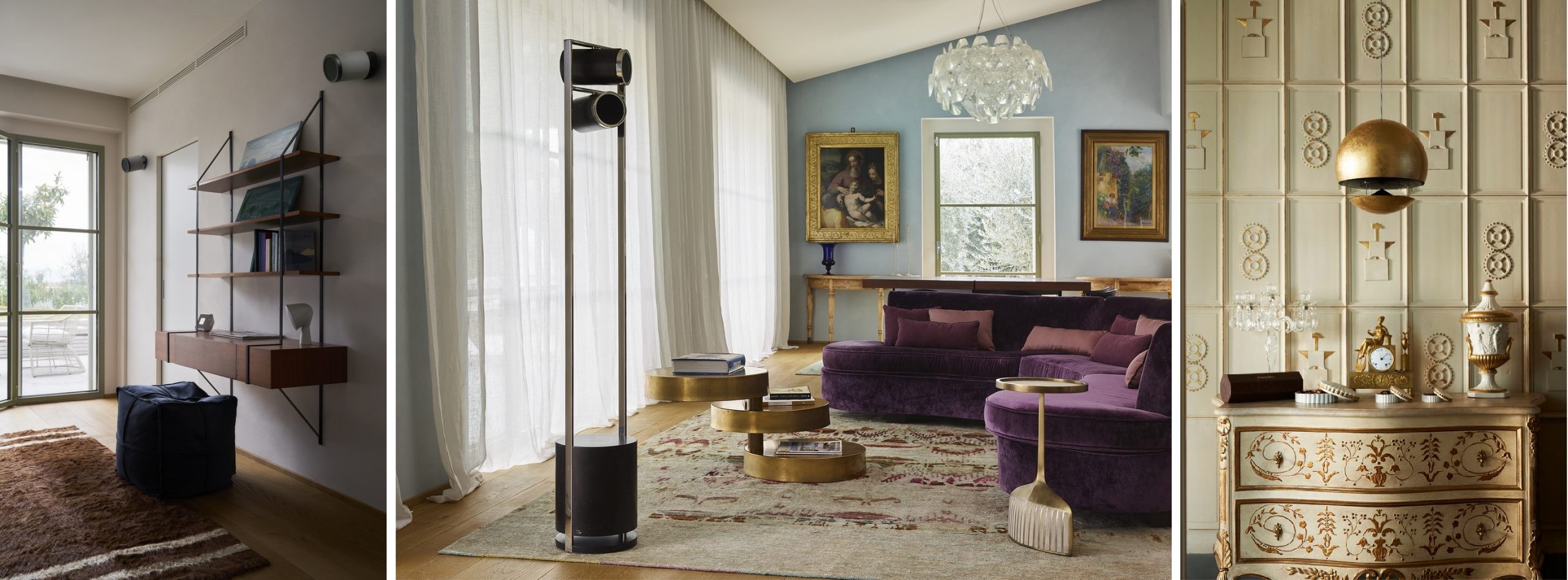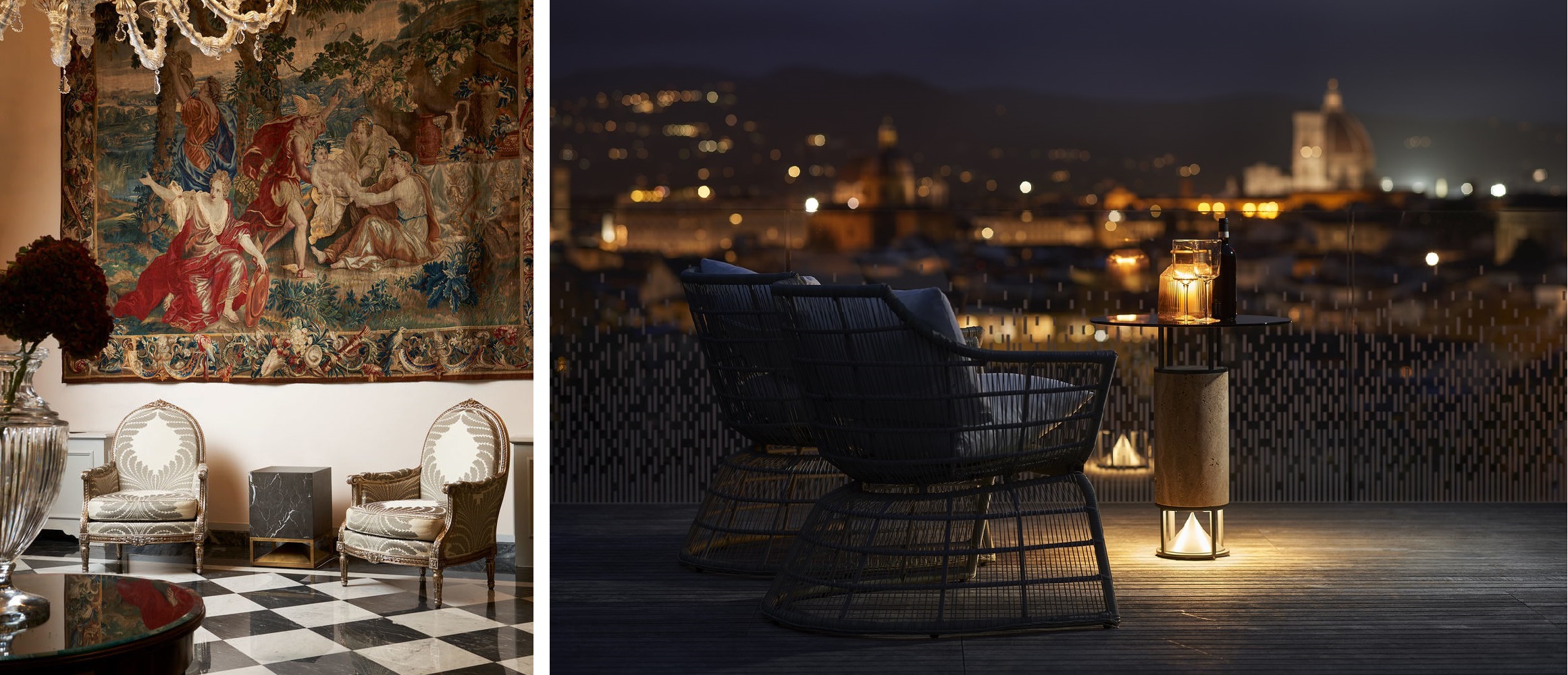The previous two issues by Architettura Sonora discussed the role that sound can play in the design and furnishing of a space, pointing out similarities and differences between sound and light sources and giving examples of how to acoustically achieve effects similar to those of some light effects. Let us now try to see how to use what we have seen to furnish two typical rooms acoustically and what other aspects might need to be taken into account in doing so.
Suppose we want to sonorize a park in which several zones coexist, different in nature or purpose (an open area, a lawn, a relaxation area, a picnic area), perhaps partially separated from each other by vegetation or special structures; we might want to exploit such a configuration, defining for each zone a very precise “acoustic scenario.” For areas around a center, ideal if not even geometric, the use of omnidirectional modules, capable of projecting sound 360° all around at all frequencies, might be suitable: from the “core” of the individual areas would thus derive not only the specific function of the area, but also the acoustic emission, suggesting an inseparable connection between the two. The sound content could be different on a case-by-case basis, preferring more dynamic and energetic musical backgrounds for leisure areas and calmer ones for areas intended for relaxing activities such as rest, reading, yoga … .
Instead, the areas arranged at the boundaries of the park could be covered acoustically by directional modules, which, starting from the physical boundaries of the area, can direct sound toward its central part; with this choice, one could both reduce the effect of reflections of acoustic waves against the physical boundaries (wall or vegetation that is) and, by using more modules, go to cover areas with a more elongated shape, as the ones in question are likely to be.

In furnishing an outdoor environment, two fundamental factors to consider are on the one hand the resistance of the acoustic loudspeaker to atmospheric agents, and on the other its ability to harmonize in the environment, both aesthetically and functionally. Finally, a final aspect concerns the sound power required: wanting to avoid the sound of one area going to interfere with that of another, the level of the individual modules must be properly calibrated, also taking advantage of the phenomenon whereby the sound level decreases as one moves away from the source.

Although the principles outlined above remain valid and applicable in any situation, the acoustic furnishing of an interior presents its own challenges, related on the one hand to the difficulty of arranging the loudspeaker in a space that is already organized according to an idea and in which furniture is already present, and on the other hand to the desire to integrate the module into the environment while maintaining a precise style or color palette. While loudspeakers that offer the possibility of customizing the outer covering with different materials and tones may come in handy for the latter, for the former it is necessary to anticipate having to position the loudspeakers differently than is possible in larger spaces such as those typically found in a park. Keeping always in mind the differences between light and sound that we have already focused on, the task could be likened to that of placing light sources in the environment: just as depending on the area to be illuminated and the space available the choice falls on floor lamps, chandeliers, wall sconces or abat-jours, in the same way for our environment acoustic diffusers may be preferable on the floor, hanging, wall or placeable on furniture.

Finally, the possibility of entrusting the acoustic diffuser with an additional function should not be overlooked: if by integrating a light source into the module it is possible to transform it into a valuable light point, this could even turn out to be an elegant table or a practical bedside table when it is made by favoring materials and design solutions that allow it to minimize vibrations during use.








